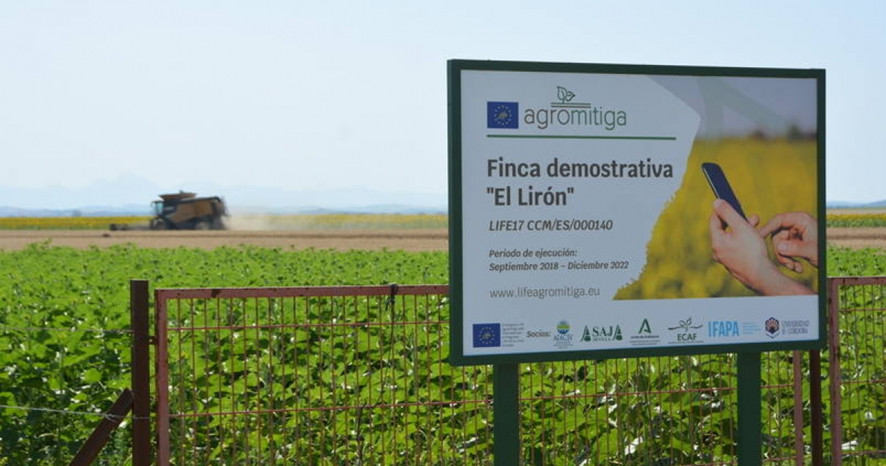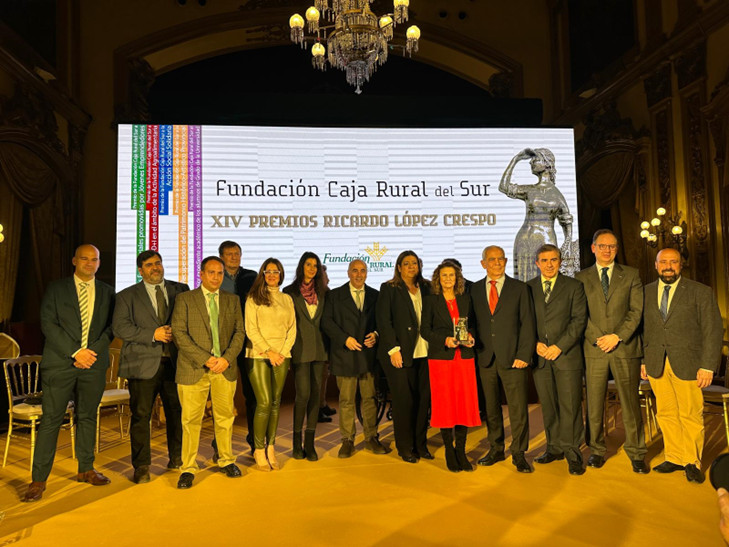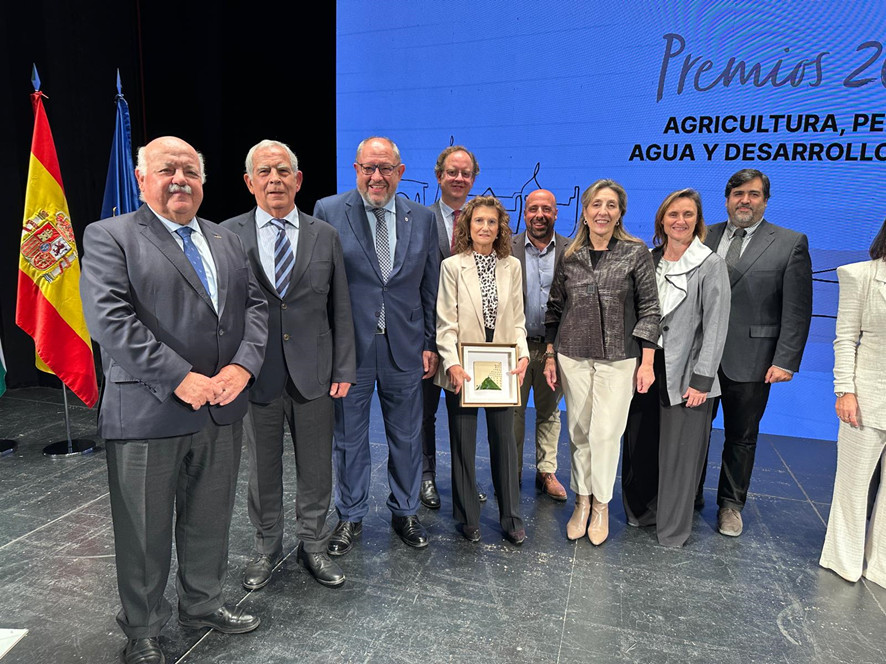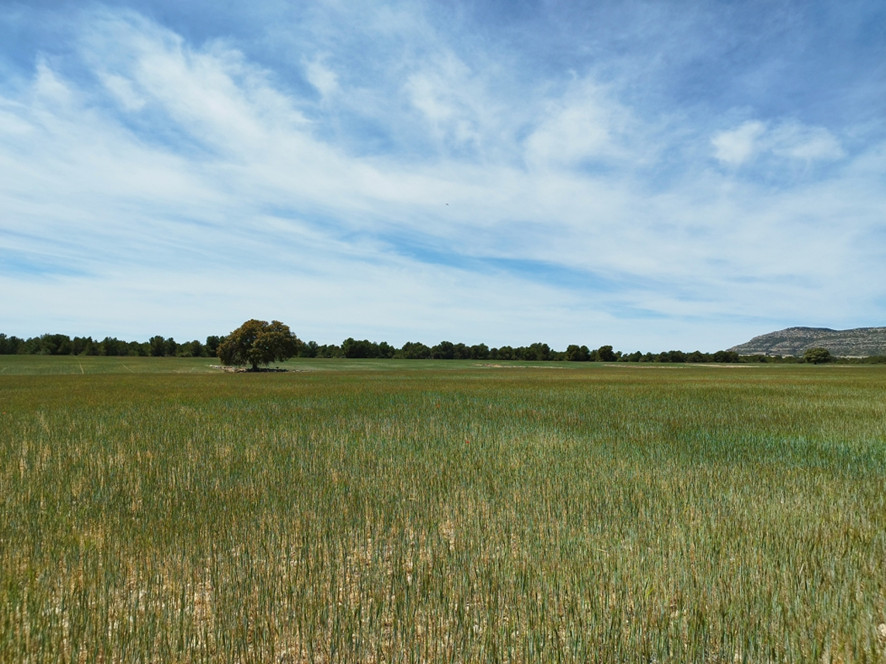Life Agromitiga: Sustainable Practices That Save Costs and Resources

Advances in Andalusian Agriculture Against Climate Change
2023-03-31
Conservation Agriculture Gains Recognition: “Once You Start, You Don’t Quit”
2023-04-25Life Agromitiga: Sustainable Practices That Save Costs and Resources
Embracing conservation agriculture is essential to align with the new CAP and eco-schemes.
With climate change shaping the reality of the agricultural sector and a Common Agricultural Policy (CAP) that imposes greater environmental demands than previous versions, sustainability is now a necessity for Andalusian farmers.
Thus, opting for conservation agriculture is not just an option but the key to maintaining or even increasing farm profitability. This is achieved through two main pathways: cost reductions resulting from conservation agriculture practices and the new CAP’s eco-schemes, as many of these practices are integrated into the new environmental regimes.
Within this framework, the Life Agromitiga project, now in its final year and coordinated by the Spanish Association for Conservation Agriculture Suelos Vivos (AEACSV), hosted a seminar at the European Parliament. The event presented the results of work carried out alongside the Andalusian agricultural sector to promote the adoption of conservation agriculture and the development of good farming practices that help mitigate climate change and its effects.
Life Agromitiga includes participation from ASAJA Sevilla, the University of Córdoba, the Andalusian Institute for Agricultural and Fisheries Research (IFAPA), the Regional Government of Andalusia, and the European Conservation Agriculture Federation (ECAF).
Carbon Sequestration in Agricultural Land
Under the title "Carbon Farming: Challenges and Opportunities for European Farmers", farmers, researchers, and technicians discussed advancements in conservation agriculture, which contributes to net carbon sequestration in agricultural land while reducing greenhouse gas emissions, preventing erosion, and increasing CO₂ storage in the soil.
It is important to note that conservation agriculture is a management system applicable to both arable and woody crops. It is based on three key principles: eliminating soil tillage, maintaining at least 30% of the soil surface covered with vegetation, and implementing crop rotation.
Over the past decade, the adoption of direct seeding and cover crops has steadily increased in Spain. Specifically, the use of cover crops has risen by 15%, while direct seeding has grown even more—by 65%.
Ministry Data
Data from the Ministry of Agriculture supports this upward trend. In 2021, the latest recorded data, cover crops occupied 1.35 million hectares of agricultural land in Spain, representing 25% of the total surface area of woody crops. Spontaneous cover is the predominant technique, particularly in olive groves, where it covers 781,026 hectares (28% of the total area of this crop). Meanwhile, direct seeding reached 845,000 hectares, accounting for almost 12% of the total area of herbaceous crops.
Within this context, the Life Agromitiga seminar was inaugurated by Juan Ignacio Zoido, Member of the European Parliament and the Agriculture and Rural Development Committee; Ricardo Serra, President of ASAJA Sevilla; and Óscar Veroz, Executive Director of AEACSV.
The Cost of Inaction
Two roundtable discussions featured experts such as Emilio González, professor at the Higher Technical School of Agricultural and Forestry Engineering at the University of Córdoba. He estimated that the cost of inaction regarding soil degradation in the European Union exceeds €50 billion annually.
Furthermore, González stated that conservation agriculture in Spain has a mitigation potential of 53 million tons of CO₂ per year—enough to offset the entire emissions output of the country’s agricultural sector. According to his projections, up to 189 million tons of CO₂ could be captured annually in the European Union through the widespread adoption of these sustainable practices.
To achieve this goal, Life Agromitiga has focused primarily on Andalusia, where it has conducted work on 36 farms. However, its results are applicable across the Mediterranean Basin, as additional research has been carried out on nine farms in other European countries. The project has developed tools and strategies that enhance carbon sequestration capacity by evaluating the impact of various agricultural and soil management practices in both herbaceous and woody crops.
The most significant conclusion is that agricultural soils can act as major carbon sinks without negatively impacting production.
"With this project, we aim to contribute to the transition toward a low-carbon agricultural system by providing validated results applicable to the EU's climate commitments," stated ASAJA Sevilla.
Key Findings
Among the key findings, farms that have adopted direct seeding as a management system in herbaceous crops show 40% and 20% higher soil CO₂ levels compared to conventional tillage.
Additionally, over the past two years, energy consumption on these experimental farms has decreased by 18%, alongside optimized fertilizer use—resulting in cost savings, more efficient water use, and improved environmental sustainability.
Various studies under LIFE Agromitiga and other initiatives led by the Spanish Association for Conservation Agriculture demonstrate that techniques such as direct seeding and cover crops maintain stable production levels. In dry years, which are becoming more frequent due to climate change, these crops respond better and use soil-retained water more efficiently. Furthermore, by eliminating tillage, cultivation costs decrease, leading to higher profits for farmers.
Carbon Credits
A significant incentive for adopting conservation agriculture is carbon credits. Although the European Union has yet to regulate the carbon market, an increasing number of companies that exceed greenhouse gas limits seek carbon credits to offset their emissions. This means that farmers can receive financial compensation for the CO₂ they prevent from being released into the atmosphere.
In fact, Juan Ignacio Zoido, from the European People's Party, emphasized the financial potential of sustainability, stating, "Just as polluters must pay, those who reduce pollution should be compensated."
This post is also available in: Español (Spanish)




